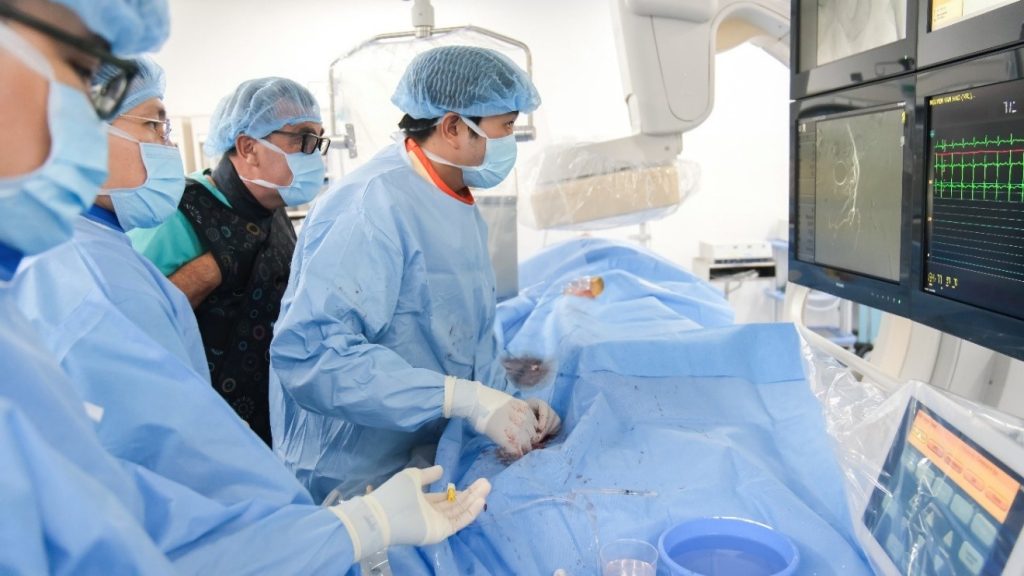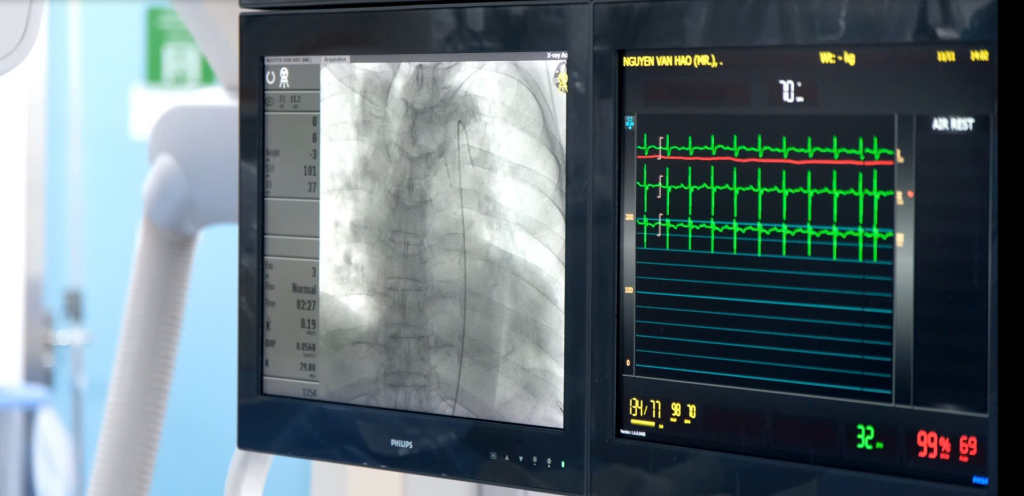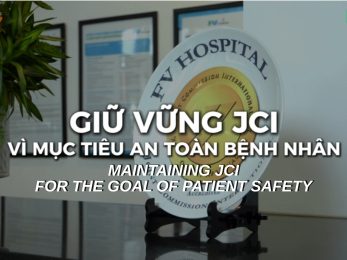Prostate Artery Embolisation (PAE) – A Minimally Invasive Solution for Elderly Patients with Benign Prostatic Hyperplasia
In recent years, this procedure has increasingly demonstrated its effectiveness in reducing the need for prostate removal and is now available at FV Hospital.
Prostate Artery Embolisation (PAE) is a widely used treatment for benign prostatic hyperplasia (BPH), providing a minimally invasive alternative to prostate removal surgeries such as TURP (Transurethral Resection of the Prostate) or laser procedures. PAE is conducted in the Cathlab under local anaesthesia, avoiding the need for general anaesthesia.
A recent notable case at FV Hospital involved Dr Huynh Huu Danh, Specialist Level I from the Imaging & Interventional Radiology Department at FV Hospital, performing the PAE procedure on an 87-year-old male patient who had endured BPH for many years. This procedure was uniquely carried out under the observation and guidance of Professor Mark Ryan (*), a distinguished European interventional radiologist currently working at Trinity College Dublin and Beacon Hospital in Ireland.
Following the intervention, the patient’s health stabilised with no complications reported, allowing for discharge after one night of monitoring. One week post-procedure, Dr Danh evaluated the patient’s symptoms and quality of life, noting significant improvements. The patient reported reduced daytime urination frequency, fewer nighttime urinations, and a stronger urinary stream. His International Prostate Symptom Score (IPSS) improved markedly, decreasing from 17 prior to the procedure to 10 afterwards.

To perform the PAE procedure, an interventional radiologist creates an access point in the right femoral artery and guides a catheter into the internal iliac arteries. Using a Digital Subtraction Angiography (DSA) imaging system, the practitioner will manoeuvre a microcatheter through the main catheter to reach the prostate arteries. Once the microcatheter is correctly positioned, an embolic agent is injected to block these blood vessels, effectively cutting off the blood supply to the prostate gland.
The enlarged prostate typically begins to shrink within 2-3 weeks, with noticeable improvement in lower urinary tract symptoms in approximately 2 weeks.

The Imaging & Interventional Radiology Department at FV Hospital, with its experienced team of doctors, state-of-the-art equipment, and support from international experts, consistently delivers excellent treatment outcomes using advanced techniques. Alongside embolisation procedures for benign prostatic hyperplasia, the department has successfully treated complex conditions with interventional radiology methods, including transarterial chemoembolization (TACE) for liver cancer, retinoblastoma treatment, monitoring and intervention for cerebral aneurysms and vascular malformations, uterine fibroid embolisation, uterine artery embolisation to prevent postpartum haemorrhage, and sclerotherapy for venous malformations, among others.
The Interventional Radiology Unit continues to strive to be a trusted partner in healthcare, expanding collaborations with organisations and medical experts to enhance expertise and treatment outcomes.
(*) Professor Mark Ryan is a specialist in cancer treatment and vascular conditions, using minimally invasive techniques such as chemoembolisation and tumour ablation. With over 20 years of experience in research and teaching, he has more than 170 published scientific articles, accumulating over 2,650 citations. He has presented at numerous international conferences, including CIRSE, ECR, and WCIO, and serves as an organiser, scientific reviewer, and expert advisor for various interventional radiology organisations across Europe.

 Vi
Vi 












